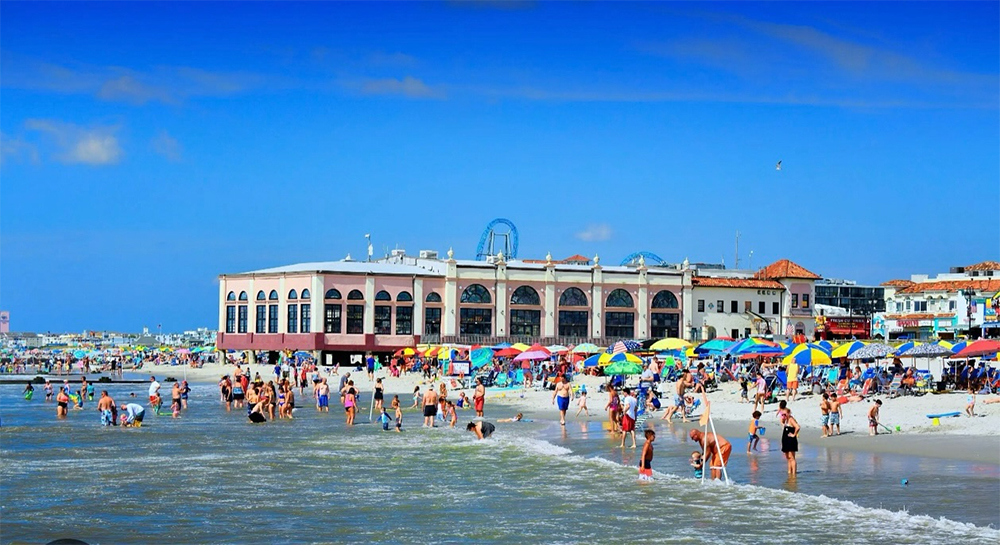We shivered through our coldest winter in 10 years, held our hats during the windiest winter in 15 years, and lived the rollercoaster temperature ride of spring. Now Memorial Day weekend is here. It’s the unofficial start of summer.
There’s an old saying for our beach season weekend holidays. It’s some variation of:
Memorial Day we shiver.
Fourth of July we sweat.
Labor Day we shine.
We all want a fun Memorial Day weekend. It helps our stores make money when visitors and part-time homeowners come back. It’s great for people who want to return to their favorite slice of sand for a few months, and it’s an awesome place for our kids and grandkids to have a good time, and our families to make memories.
But Memorial Day is in late May, during spring. That means the weather can be unpredictable and change a lot.
Looking at my Shore Summer Weekend Weather Report Card, the holiday weekend earned an average grade of C-plus between 2019 and 2024. That being said, the past three years all earned at least a B.
Using climate as our barometer (no weather pun intended), steady beach or boating weather begins in mid-June and ends after the Labor Day holiday, in mid-September. I use criteria from my Shore Summer Weekend Weather Report Card as a guide, with temperatures at or above 75 degrees, winds under 15 mph and a lower risk of widespread rain makers as the main benchmarks.
Temperatures
Per the National Oceanic and Atmospheric Administration (NOAA), at Sen. Frank S. Farley State Marina in Atlantic City, the average high temperature hits 75 degrees on June 14. It then peaks at 81 degrees from July 12 to July 27, then it falls, dipping under 75 degrees for the first time on Sept. 15.
For about three months, it’s usually warm enough to wear a bathing suit and stay outside all day. From July 4 to around Aug. 20, beach weather is nearly guaranteed. There’s an 80% chance the temperature will be 75 degrees or higher, according to the Iowa Environmental Mesonet.
I checked the weather in Long Branch, Monmouth County, where the monitoring station is about a mile from the ocean. There, the average high temperature is 75 degrees or more from June 6 to Sept. 21. It’s nearly the same as Atlantic City.
Winds
It’s proven that winds weaken in the summer.Our least windy time of year is July through September, which fits in fairly well with the temperatures. We look to Atlantic City International Airport for this data from the Iowa Environmental Mesonet.
May: 9.5 mph
June: 8.6 mph
July: 7.9 mph
August: 7.5 mph
September: 8.0 mph
October: 8.5 mph
As the Earth’s axis tilts and the Northern Hemisphere warms, wind-making systems, including nor’easters and powerful cold fronts, stop passing here around mid-June. This lasts through about mid-October.
Of course there are tropical storms and hurricanes that bring plenty of wind. While we always need to prepare, our likelihood of experiencing one is fairly low. This year, Colorado State University gives New Jersey a 29% chance of a tropical storm, and a 9% chance of a hurricane impacting our coast.
Steady rain
From mid-June to mid-October, widespread rain makers are hard to come by here in New Jersey. Just like the winds, the nor’easters and powerful cold fronts, the weather systems that would bring widespread rain don’t impact us this time of year.
However, this time of year is when thunderstorms happen a lot. They’re most common from June 15 to Aug. 15, based on info from Atlantic City International Airport. A thunderstorm might change your beach plans for a few hours, but the all-day rainy days we see in spring are pretty rare.
Shifting climate
Interestingly, the warmest 91-day period of the year has shifted to slightly earlier over the decades. In Atlantic City, here’s the shift, according to the Iowa Environmental Mesonet.
1900: June 17 to Sept. 16
1980: June 15 to Sept. 14
2020: June 14 to Sept. 13
The average temperature during climatological summer – June through August – increased by 0.65 degrees between 2010 and 2020 in southeastern New Jersey, according to ClimateCentral. Since 1904, the average summer temperature has increased from 71.0 to 74.0 degrees, per NOAA.
So where can you find true beach weather on Memorial Day?
Long-term weather averages say that once you go south to Virginia Beach, Va., average high temperatures reach at or above 75 degrees, according to NOAA. That being said, the beaches are better in Jersey, from what I hear.
Have a great Memorial Day weekend everyone, happy unofficial start to summer and let’s remember all of our fallen United States military members. It’s why we have Memorial Day in the first place.
Joe Martucci, a Certified Broadcast Meteorologist and Digital Meteorologist, is the President and Director of Meteorology for Cup A Joe Weather and Drone. You can connect with him at cupajoe.live.















